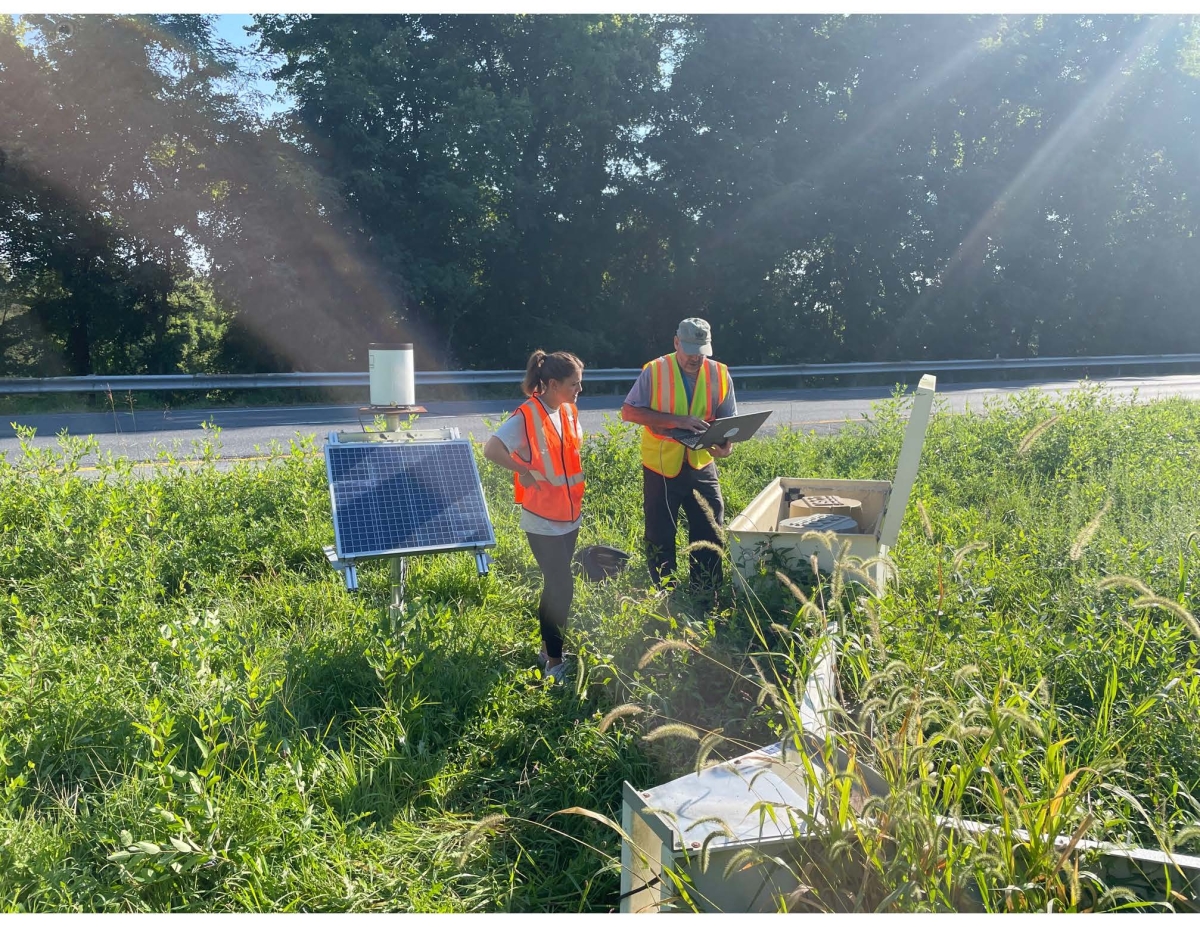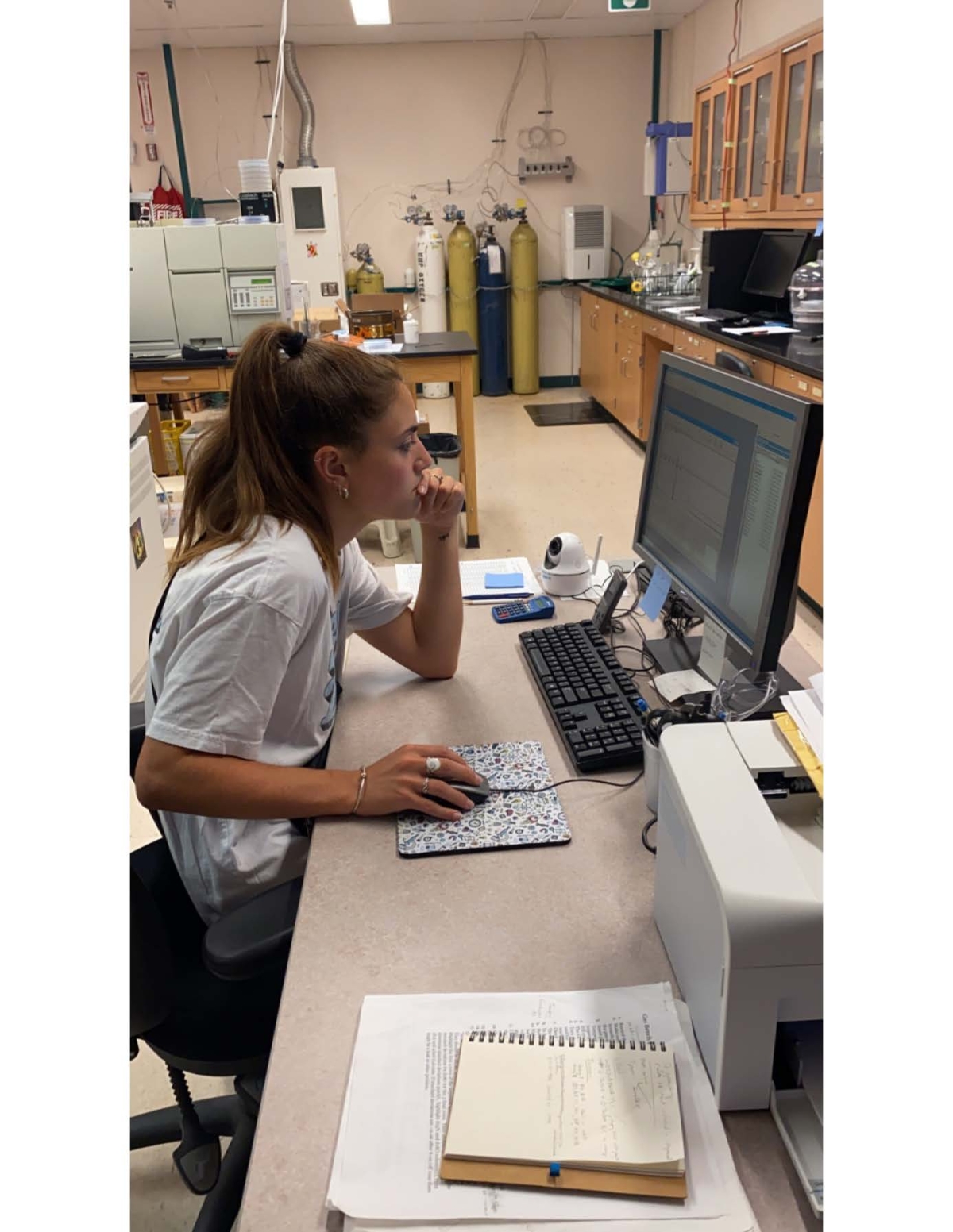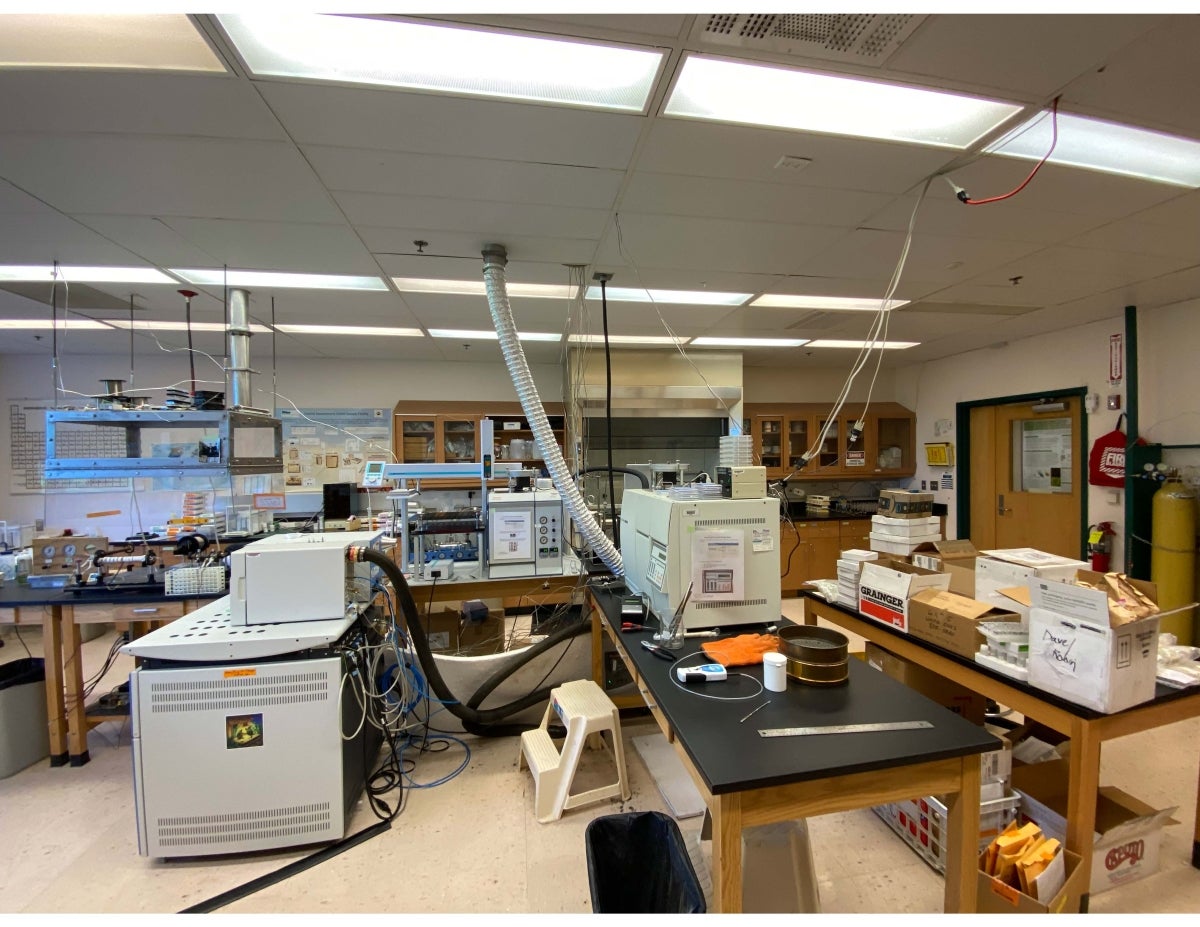Knauss legislative fellowships in Congress help build careers — and they're fun and educational. See our video and fact sheet for details.
Letting Stable Isotopes Tell the Environmental Story
I never thought studying some of the smallest units of matter would give me big ideas about my future. The summer before my senior year at Union College, I got involved in stable isotope research. At the time, I didn’t know a thing about stable isotopes beyond their simple definition. Now, I owe my future career to these atoms. Stable isotopes are defined as atoms of the same element with differing numbers of neutrons. Their many applications opened my eyes to new opportunities, including analyzing stable isotopes from a Peruvian stalagmite for my senior thesis. That research set me on a path for graduate school—something I hadn’t seriously considered before. Now, I’m using stable isotopes to study the effectiveness of stormwater best management practices on nitrogen dynamics.

Typically, isotopes are assumed to be radioactive. That is true for some isotopes, but the isotopes used in ecological research are stable and do not decay. Stable isotopes are abundant in biological compounds, such as animal and plant tissues, and have many different applications within the realm of scientific research. Scientists can infer a lot about environmental processes from the chemical reactions that govern isotopes. For example, we can learn about the position of predators and prey within a food web based on carbon and nitrogen isotope ratios. Stable isotopes can also be used as indicators of past climate, biological processes, and environmental conditions.
My own research uses stable oxygen and nitrogen isotopes to assess stormwater quality. Rapid urbanization and more impervious surfaces (like roads, parking lots, and driveways) route stormwater directly into nearby streams. This can alter water chemistry and the size and shape of streams. Green stormwater infrastructure, such as vegetated swales and bioretention facilities, is designed to retain water and mitigate urban flooding. It can improve water quality by temporarily storing water and retaining excess nutrients, such as nitrate, that could cause harmful algal blooms downstream. We can use the stable isotope composition of nitrate to identify nitrate sources and infer nitrogen cycling processes. By analyzing stable oxygen and nitrogen isotopes from stormwater samples, I hope to gain insight on how green stormwater infrastructure mitigates water pollution and changes in nitrogen retention.

Another graduate student at the University of Maryland Center for Environmental Science’s Appalachian Laboratory is studying the effects of climate change and sensitivities to drought on eastern North America’s temperature deciduous forest. Past forest drought sensitivity can be best understood using stable carbon isotopes of fossilized pollen grains. A plant’s water versus carbon uptake changes when water is less available, so carbon isotopes can give scientists clues about past periods of drought. This research is an example of paleoclimate reconstruction, a method that uses climate proxies and biological and geological evidence, such as tree rings and ice cores, to infer past climate in both aquatic and terrestrial environments. Paleoclimate research can help us understand the nature of climate fluctuation and its predictability. It can aid future predictions and our understanding of how human activities impact current climatic conditions.
My peers at the Appalachian Laboratory also utilize hydrogen, nitrogen, carbon, and sulfur stable isotopes found in bird feathers to infer bird migration patterns. As animals eat and drink, isotopes get incorporated into their tissues. From the stable isotope composition found in bird feathers and the known isotope values of rainwater across the country, scientists can infer a bird’s general geographic origin and habitat. That data can help inform management decisions for species conservation.

When studying stable isotopes, we use an instrument called the isotope ratio mass spectrometer (IRMS). The IRMS measures the slight difference in mass between the heavy and light isotope of a sample compared with a reference standard. That slight change in mass that the IRMS measures is not so tiny in my opinion. Scientific research in this field has not only played a pivotal role in my development as a scientist but has also given me a positive outlook for my future. As the application of stable isotopes grows in the field of ecological research, I have recognized many different career avenues to pursue after graduate school. Whether it’s a position in the state or federal government or a private-sector job, I know I’ll be able to continue to use and explore the great possibilities of stable isotopes in the environment.
Top left image: The Appalachian Laboratory in Frostburg, Maryland. Photo, University of Maryland Center for Environmental Science / Cheryl Nemazie.
See all posts to the Fellowship Experiences blog

